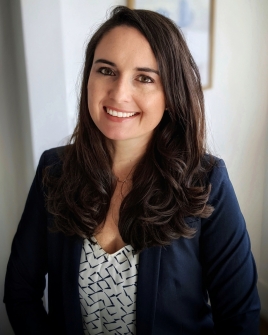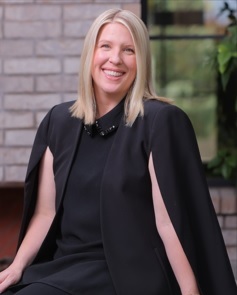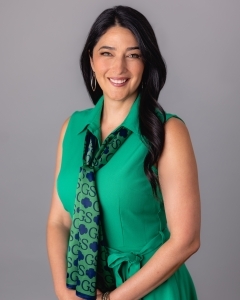Leaders on how ASU master’s degree in nonprofit management prepared them for successful careers

ASU’s master’s degree program in nonprofit leadership and management at the School of Community Resources and Development is designed to serve midlevel professionals who seek senior leadership or upper management-level positions in the nonprofit sector. Photo courtesy iStock
Nonprofit organizations perform a variety of essential community roles, including providing charitable, educational or developmental services using donated funds as well as through the sales of goods and services at cost.
But whether large or small, multifaced or more singularly focused, all of them require knowledgeable and capable leaders with the training and the vision to take their organizations to higher levels of public service and social impact.
ASU’s master’s degree program in nonprofit leadership and management (MNLM) at the School of Community Resources and Development is designed to serve midlevel professionals who seek senior leadership or upper management-level positions in the nonprofit sector. Students learn best practices to direct the influence that nonprofits have on communities’ social structure while they acquire top-quality management skills.
“Our alumni are found making a difference in every corner of our country and, indeed, around the world,” said Robert Ashcraft, executive director of ASU’s Lodestar Center for Philanthropy and Nonprofit Innovation and Saguaro Professor of Civic Enterprise. “They bring the highest level of purpose-driven intention and extraordinary competence to assure nonprofits achieve their goals to improve the quality of life in our communities.”
In 2019, ASU’s MNLM curriculum was one of the first 10 in the world to receive accreditation from the international Nonprofit Academic Centers Council (NACC). Only two others have been added to the list since.
Three graduates of the ASU MNLM program talked about how their studies prepared them for respected nonprofit leadership roles.
- Amber Martinez is vice president of development at LA’s BEST, an after-school enrichment program for Los Angeles Unified School District elementary school students who have the fewest resources and the greatest needs.
- Amber Skalsky is program director of the Phoenix-based Steele Foundation, which works to improve the lives of Arizona’s children through investments in education.
- Christina Spicer is co-CEO of Girl Scouts of the USA’s Arizona Cactus-Pine Council. The organization helps build girls of “courage, confidence and character, who make the world a better place.”
Editor's note: Answers have been edited for length and clarity.
Question: You’re all graduates of what is now called ASU’s master’s degree program in nonprofit leadership and management. What led you to seek to be a leader in the nonprofit world, compared to the public or private sectors? What makes the nonprofit sector special?
Amber Martinez
Amber Martinez: I came to ASU initially as an aerospace engineering major, but found my purpose and passion in my nonprofit leadership and management graduate program. Growing up, I was immersed in activism and volunteer opportunities. As an adult and ASU student, I was looking for a way to develop skills that would enable me to make a positive impact on the world. I was fortunate to have found the program and to have graduated in the inaugural class. The nonprofit sector is special in that it exists in service of the public interest and plays a variety of roles in strengthening our communities.
Amber Skalsky: I’m a recent transplant back into the nonprofit sector. I think one of the unique aspects of the MNLM program is the ability to take what we learn about nonprofit strategy and management and leverage those competencies across different sectors, in different roles and functions. What I learned I was able to carry with me and apply into both the nonprofit and private sectors across private foundations and corporate giving.
Something that makes the nonprofit sector very special is how the sector can lift a community up together in a highly collaborative approach. The sector is built on transparency and partnership, fostering an environment where service providers, foundations, individuals, government and private sectors partner together around innovative ideas and inspiring leaders. Therefore, (most of the time) we avoid a closed-door, competitive atmosphere.
Christina Spicer: The nonprofit community was a community that made an incredible impact on me as a young person, and so the opportunity to be able to dedicate my life's work to this incredible sector that inspires people and to help make a healthy world is something that is an honor to do every day.
Nonprofits are in this unique space between business and government that allows for community to take care of community. It allows for both the volunteer space to say, "Hey, we want to create a world that will take care of our young people as well as issues that face our community to help make the world a better place."
Q: Tell us about your time at ASU as a MNLM student. What did you learn about the nonprofit world that surprised you?
Martinez: I joined at a time when there was a move toward professionalization in the sector, which can be seen through the development of degree programs in nonprofit leadership and management. I was in the inaugural class and we quickly bonded as a cohort. We saw a need for ongoing collaboration, professional development and support that inspired a few of us to launch a local chapter of the Young Nonprofit Professionals Network (YNPN) in Phoenix.
Amber Skalsky
Skalsky: Prior to taking part in the MNLM graduate program, I was ignorant to the significant economic impact of the nonprofit sector nationally and here, locally, within the state of Arizona. From the millions of people employed in the sector itself to the creation of jobs across the arts, the economic value of goods and services provided, the cost-benefit of after-school programs — which allow parents to work and children to be in a safe place — nonprofit organizations spur local economies in significant ways.
Moreover, when considering the cost-benefit of the billions of valuable hours volunteers commit to nonprofit organizations every year — from helping support programming to serving on nonprofit boards — the sector contributes annually well over $1 trillion to the economy.
Spicer: So there were 10 of us in our cohort, and Amber Martinez learned about an organization called the Young Nonprofit Professionals Network. We had learned all about what it meant to start a nonprofit and all of us were going to try to see what that was going to be. So there were four of us — Aaron, Caitlyn, Amber and I — and we decided to get a 501(c)(3) by making a nonprofit for the network. It was an incredible journey and we learned so much in that time. This was not something that we got credit for from ASU, but because we wanted to deeply understand how to do the work. During this process, we developed wonderful friendships, communication and lots of collaboration.
We read Jim Collins’ “Good To Great and the Social Sector” and “Forces for Good” a lot. What surprised me was how much is not really written or understood about the nonprofit sector to really create a space where you're holding a double bottom line between stewarding community resources and ensuring the fact that you're a savvy business. So although nonprofits are not businesses, we do have a responsibility to the overall community to ensure that we’re well-run, and so I think that was something that was deeply embedded in all of us during the program.
Q: Amber Martinez, your organization seeks to bridge the gap many students in underserved communities find themselves in — between simply being in school and succeeding in school. How do you apply your leadership and managerial skills to help make that happen for so many Los Angeles elementary school students who must overcome many obstacles to learning?
Martinez: At LA’s BEST we believe that all students should be empowered to explore and discover the opportunities in their lives. We inspire and prepare children to create lives full of choices. My role as vice president of development of LA’s BEST is to inspire action to ultimately increase access and more equitable pathways for all students. I oversee our fundraising strategy, our external affairs team, and manage key relationships that ensure that LA’s BEST students have the support and opportunities on par with their more affluent peers across the region.
Q: Amber Skalsky, your foundation is in a position to provide funding for a variety of educational initiatives. Knowing that there are always more requests than can be fully funded, what goes into consideration of grant applications, and how do you apply your leadership and managerial skills to helping to ensure as many children can succeed as possible?
Skalsky: Philanthropy is very much an art and a science. At the Steele Foundation there are shared attributes across the organizations we invest in. First, we seek out exceptional leaders within education who are respected and have a clear vision. Second, we believe in measuring the social return on our investments and partner with organizations who are as committed to measurement as we are. Finally, we seek out opportunities for collaboration and/or catalyzed impact.
Q: Christina Spicer, you are preparing young women to lead lives of service, leadership and changemaking. Talk about the challenges you and the adults involved have in building tomorrow’s women as active and productive citizens, and the results and satisfaction you and others who undertake this mission get from it.
Christina Spicer
Spicer: Some of the challenge is to be able to create programming and design opportunities that will reach every girl and find that magical spark that can light something in them that will help them change the world. We must do a lot and we have to pilot a lot of things and try new things and move at the speed of girl. We must think creatively and ask them what they want to see. We also have to have a three-way line of communication between the girl and the volunteer and us as staff.
It's incredibly satisfying when we find that unique moment of sisterhood, and it creates that sense of belonging and they happen in wonderful moments that are unexpected. I believe it's incredibly important that every single girl that we serve and each of their family members know that we are here to love and support them and to be able to help them achieve all of their fullest potential.
Q: What advice would each of you give to anyone considering enrolling in the MNLM program?
Martinez: Take full advantage of the network you can build while in the program. The knowledge you can gain by tapping into the experience of your peers is impressive. You can also build a pool of trusted collaborators and advisors that can be called upon in moments of need throughout your career. I’d also remind them (and a reminder to myself) to take the time to keep our passion burning. Spend some time on the front lines or with others that inspire you to do what you do. Take time to rest and recharge. Keep yourself strong and your flame burning bright.
Skalsky: ASU delivered on our education, graduate experience and career development. I 100% attribute my time in the MNLM program to setting me up for success over the last 16 years of my career. Our instructors, many of whom were at the helm of incredibly impactful organizations, inspired us to think more broadly about the role and strategy of nonprofits. The people I attended alongside remain peers and dear friends today and my go-to group for problem-solving discussions. ASU offered us a top-tier education, which helped me better understand all facets of the sector, moving beyond altruism to the business function and cross-sector influence. Even if you are not sure where you might want to end up, there are numerous avenues that exist today to apply what you’ll learn in the MNLM program to careers in private, public and government career tracks.
Spicer: Ask yourself a simple question. What skills will you need to learn to sustain your passion? The nonprofit sector can be overwhelming, it can drain you, you can be burnt out, but I believe that if in the program you could figure out what tools and what skills you will need to sustain your passion, you will find the program incredibly rewarding.
More Sun Devil community

School of Transborder Studies celebrates 15th anniversary
During the summer before his freshman year at Arizona State University, Salvador Macias participated in the AGUILA Youth…

Barrett program unlocks study abroad for first-year honors students
Twenty first-year students from Barrett, The Honors College at Arizona State University are spending their second semester…

A champion's gift: Donation from former Sun Devil helps renovate softball stadium
Jackie Vasquez-Lapan can hear the words today as clearly as she did 17 years ago.In 2008, Vasquez-Lapan was an outfielder on…




